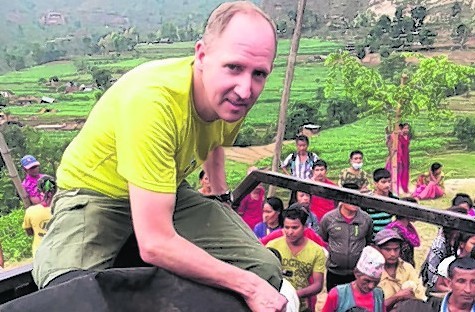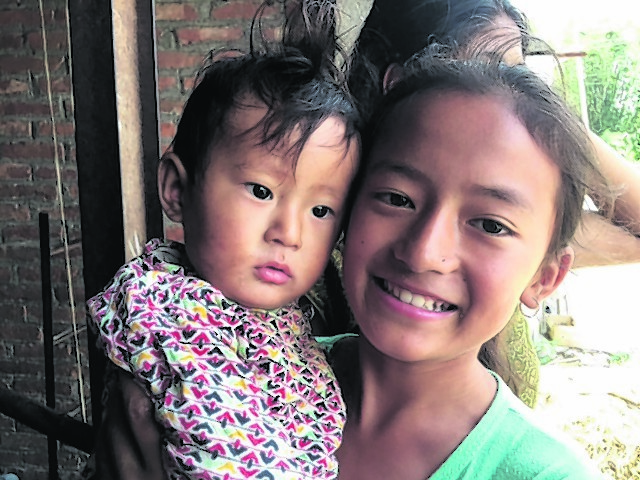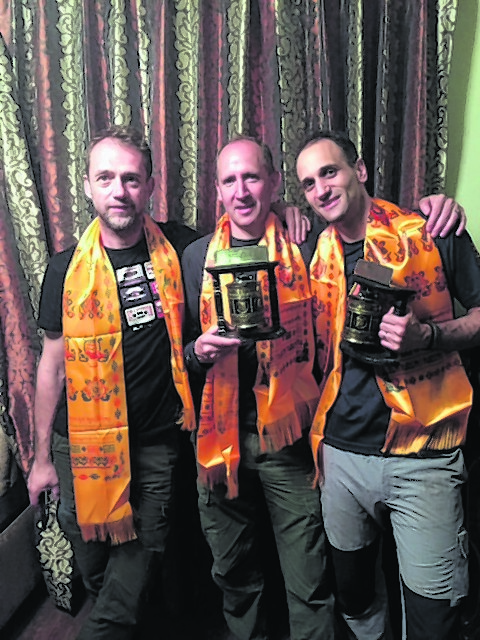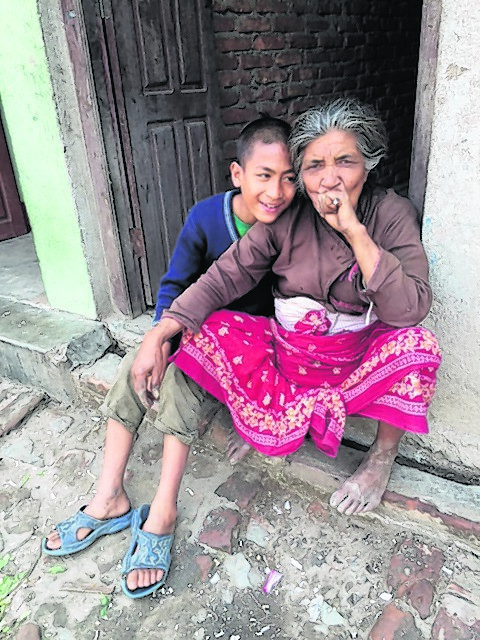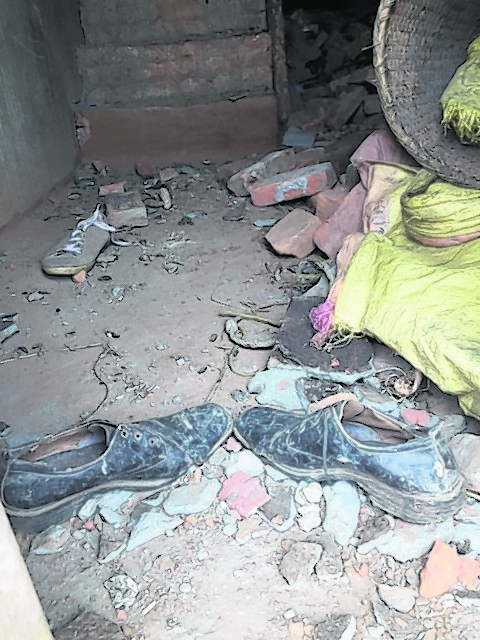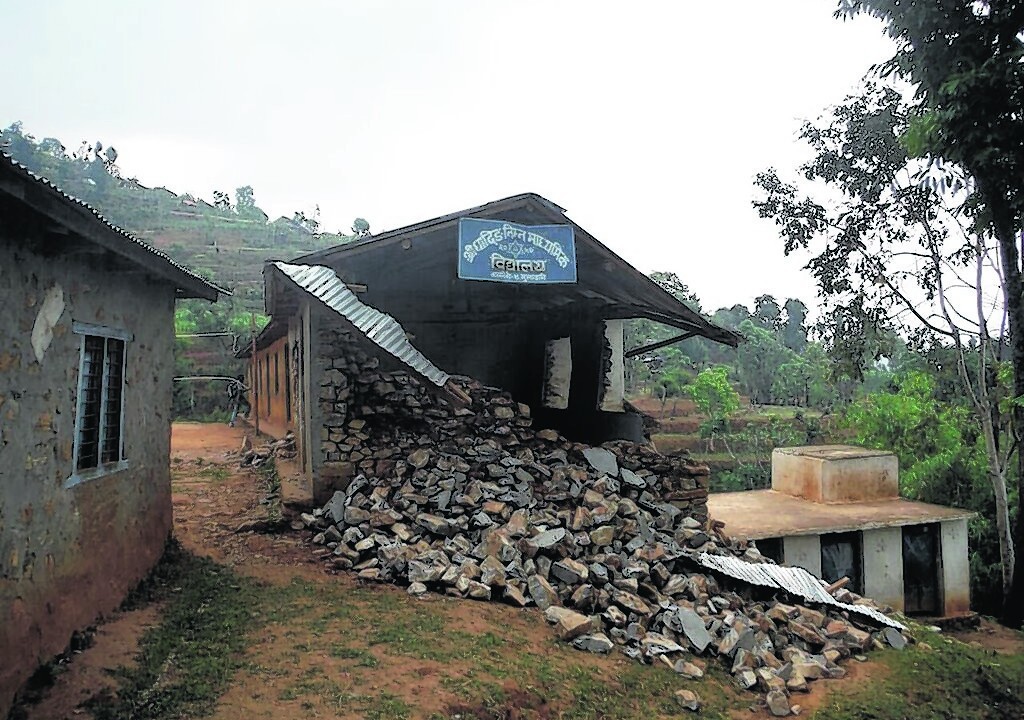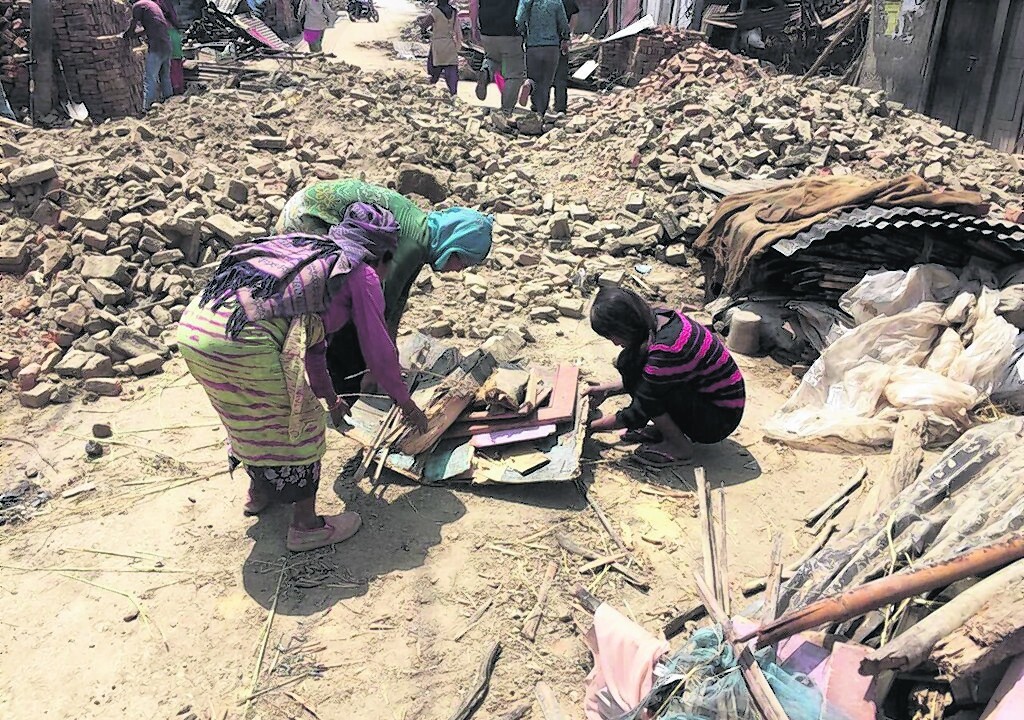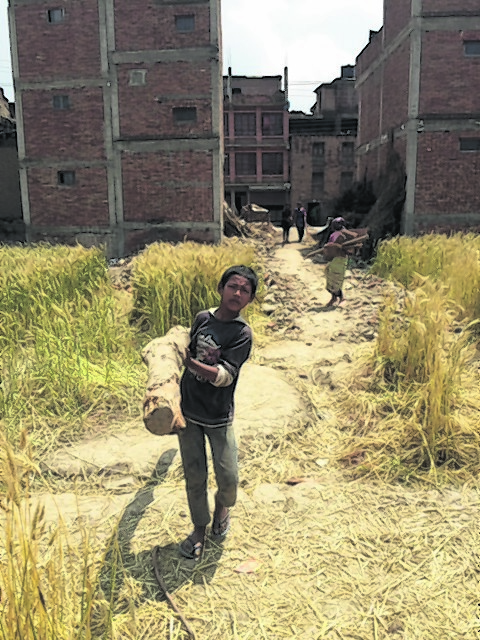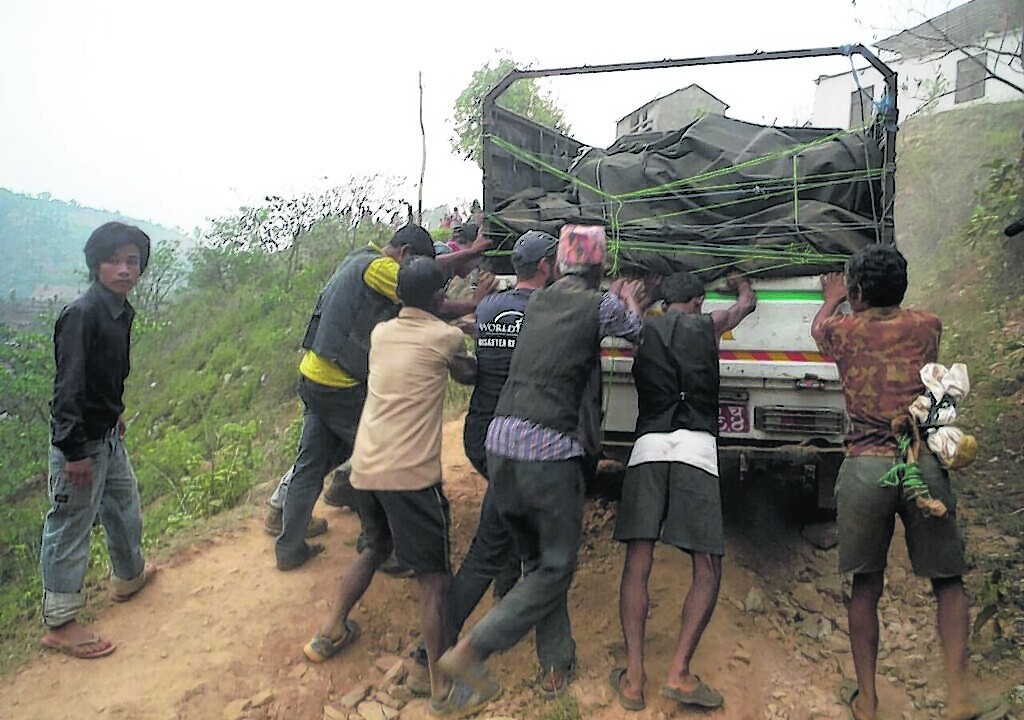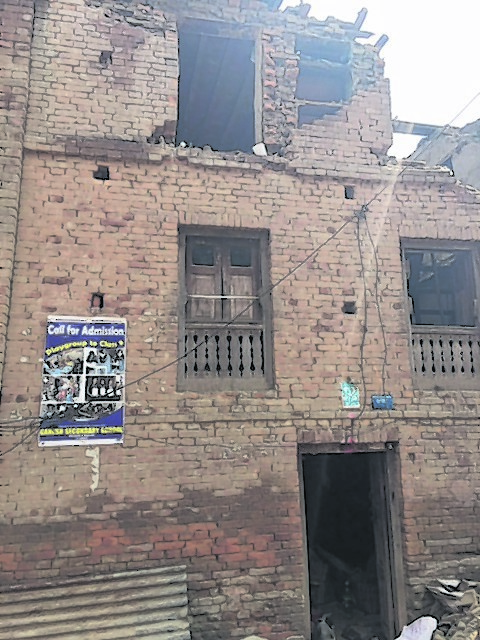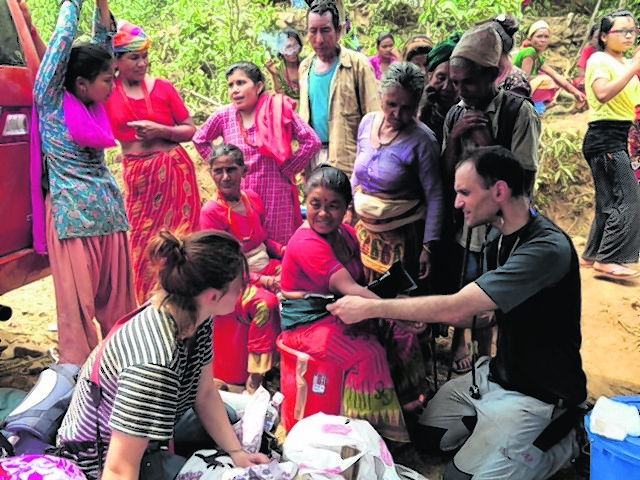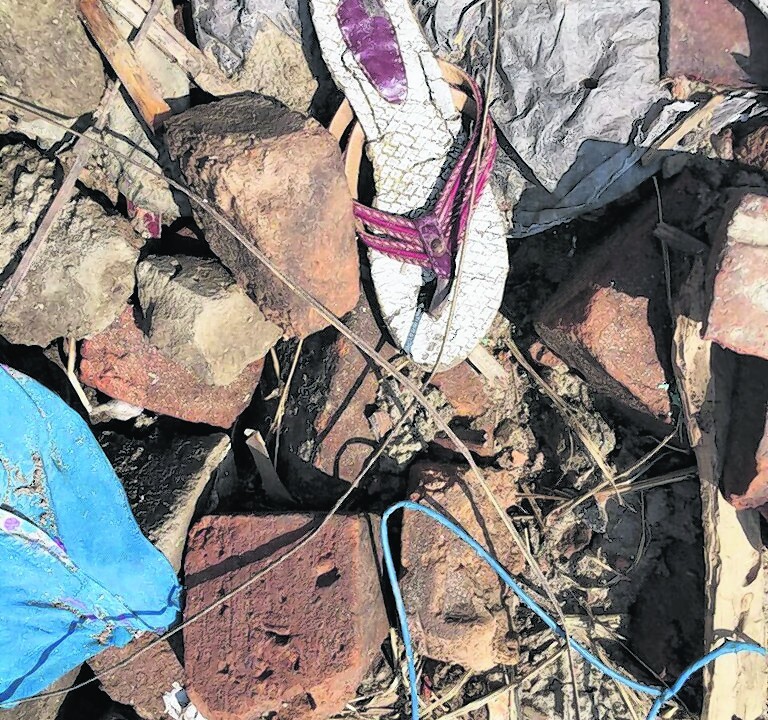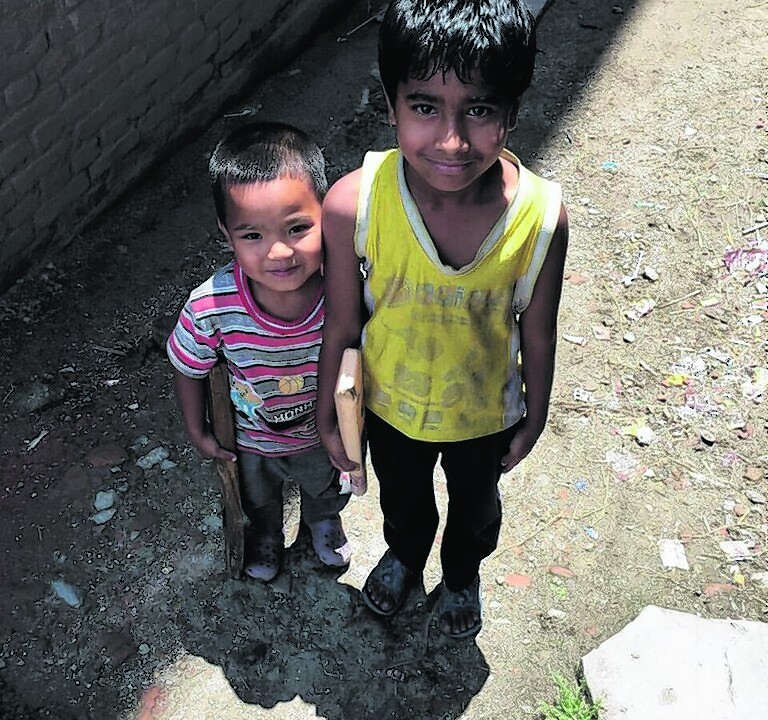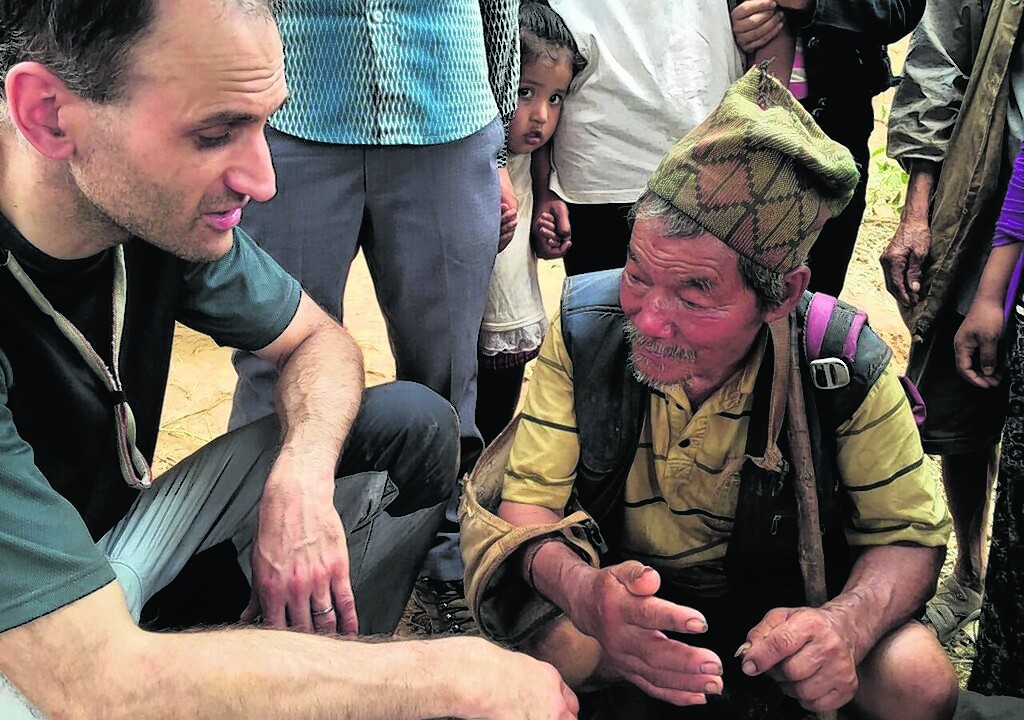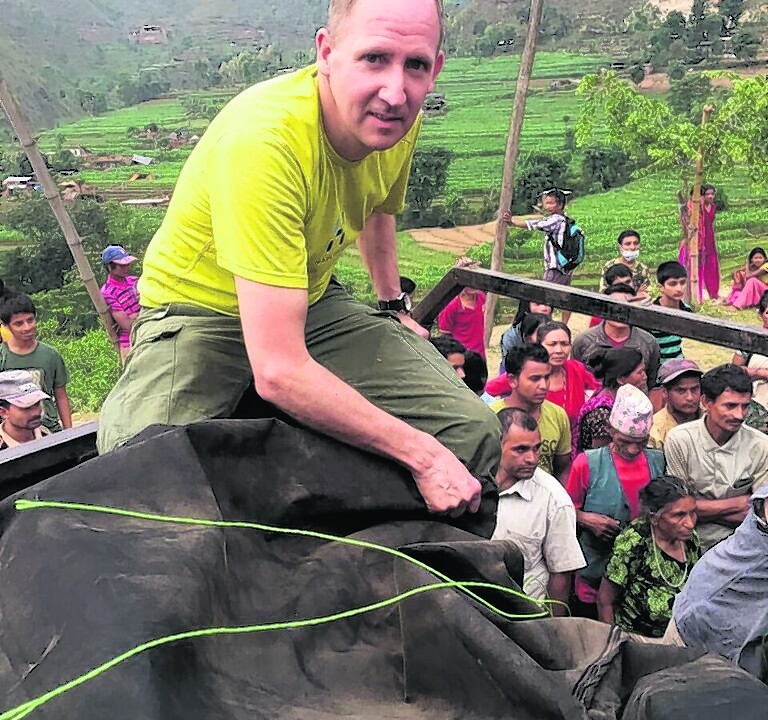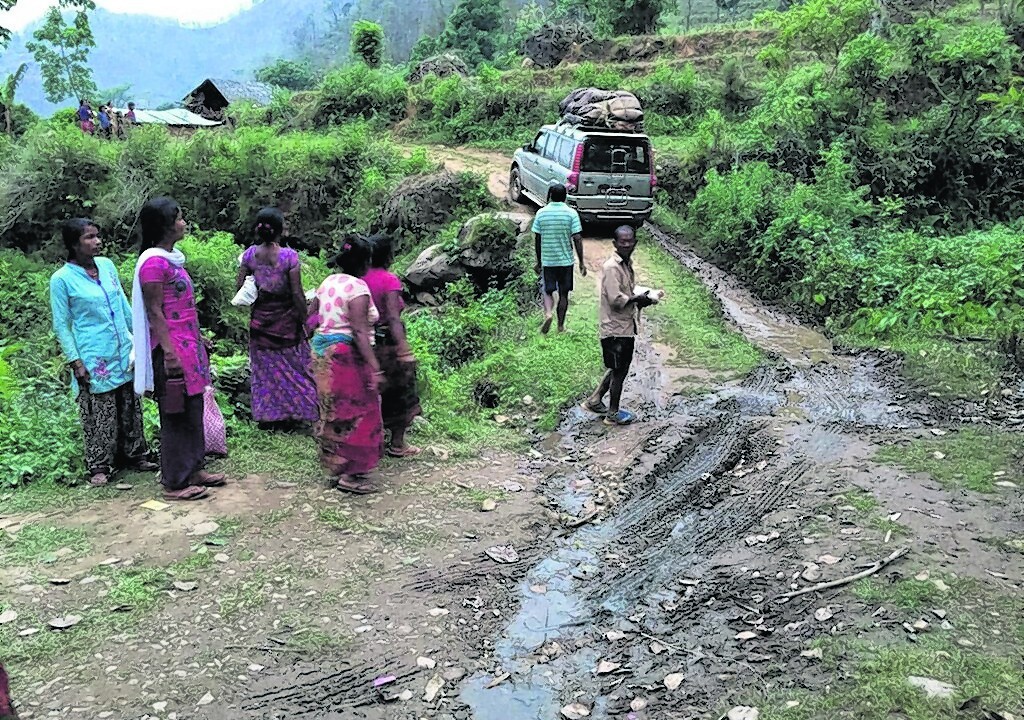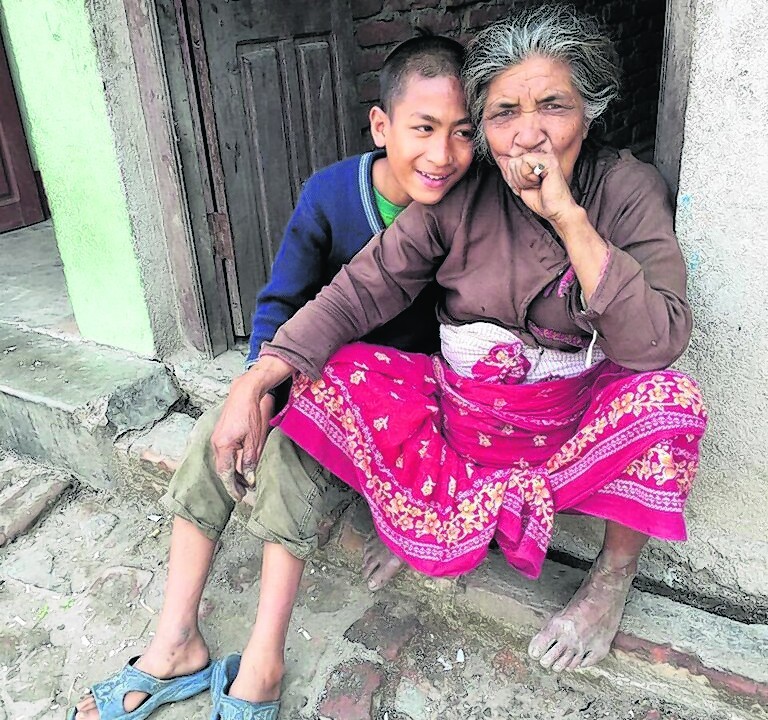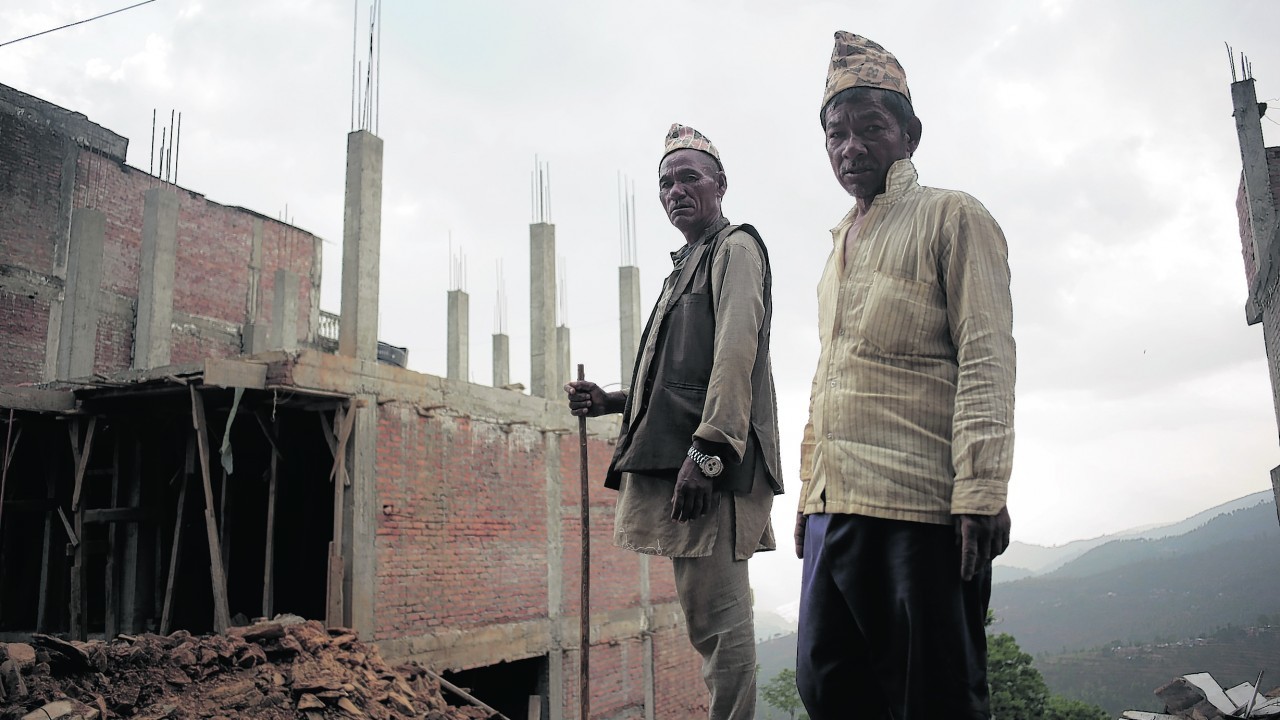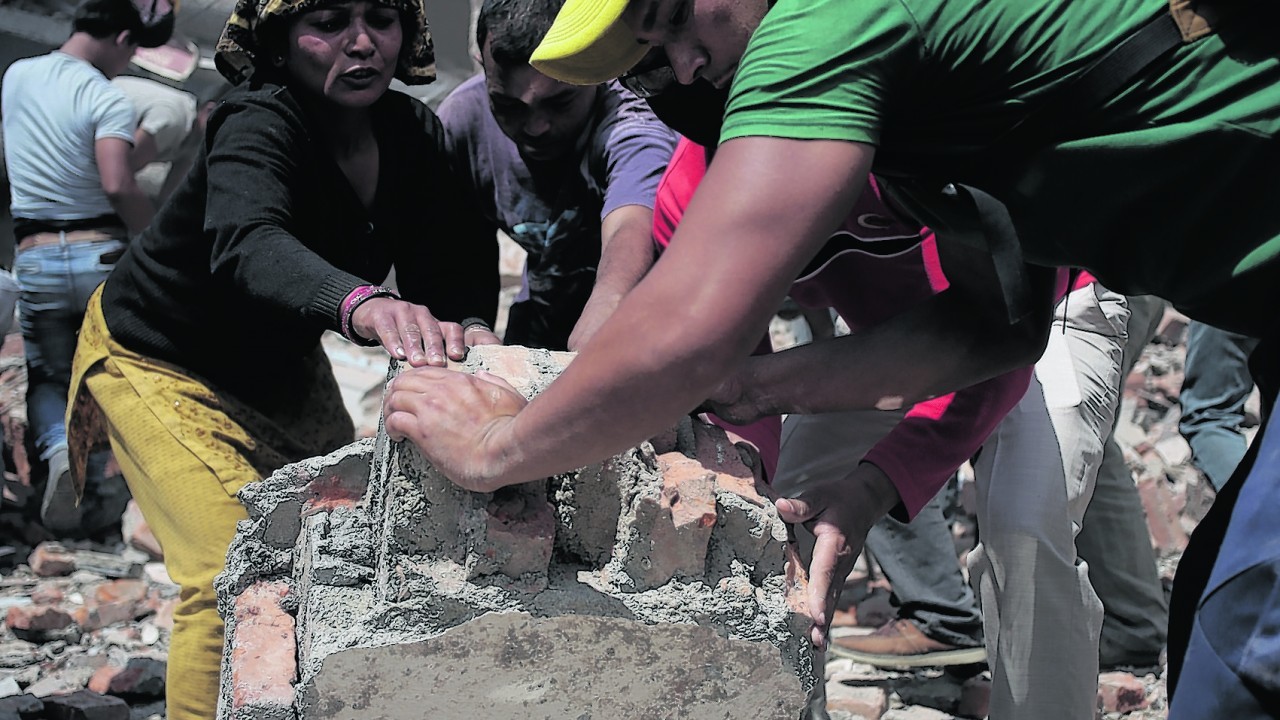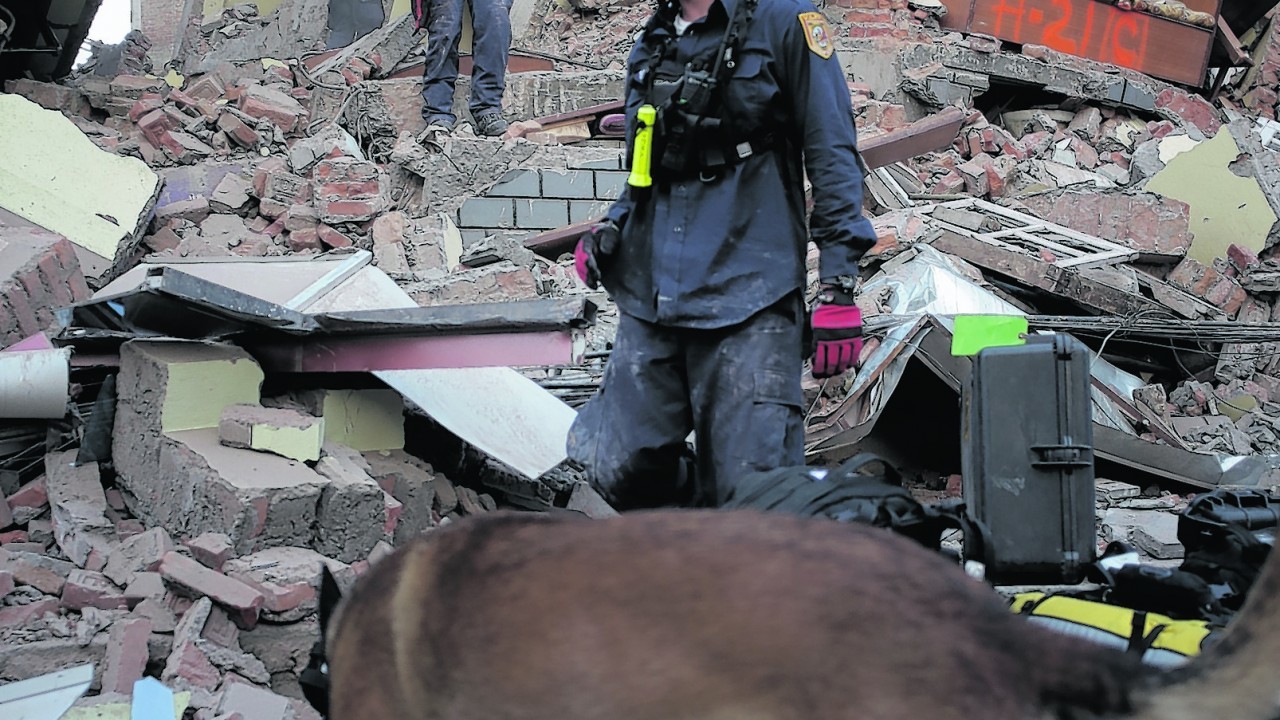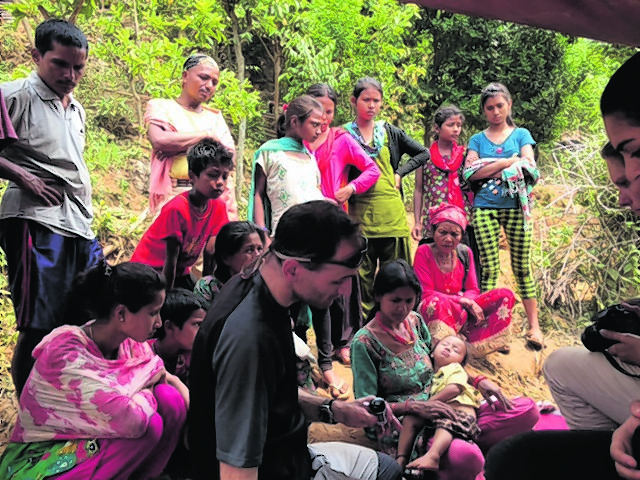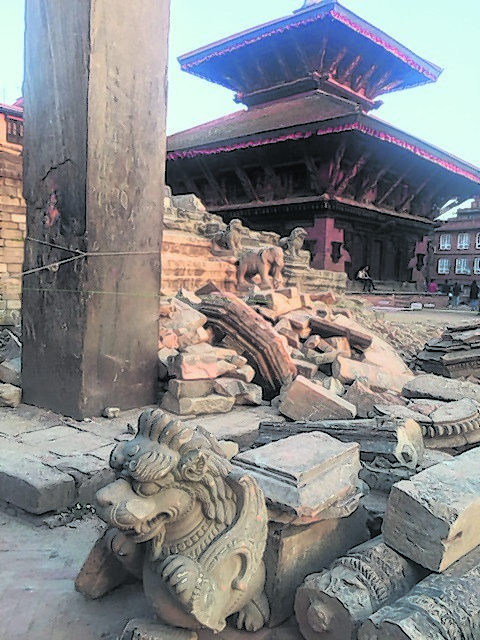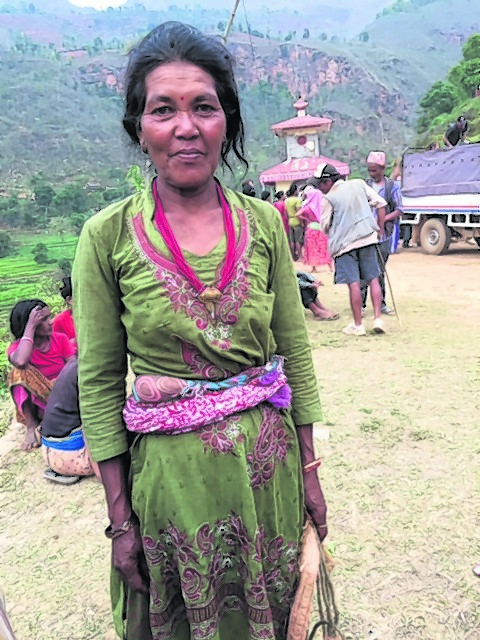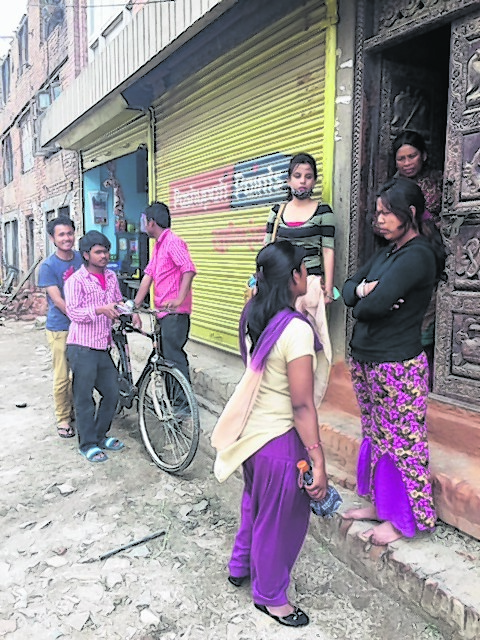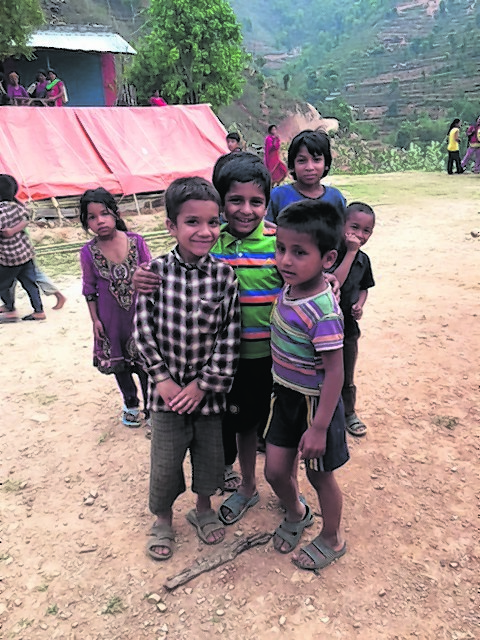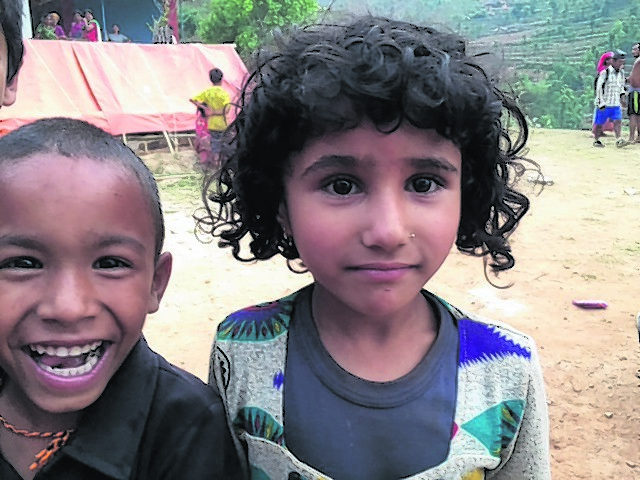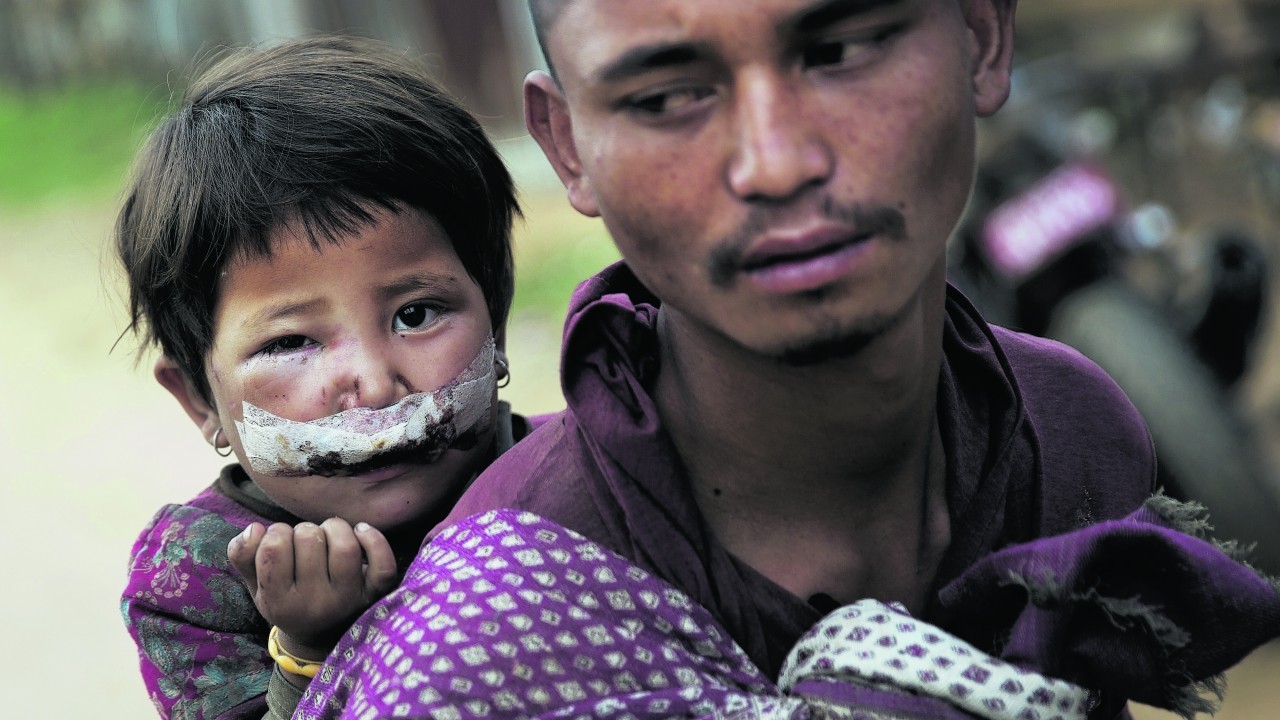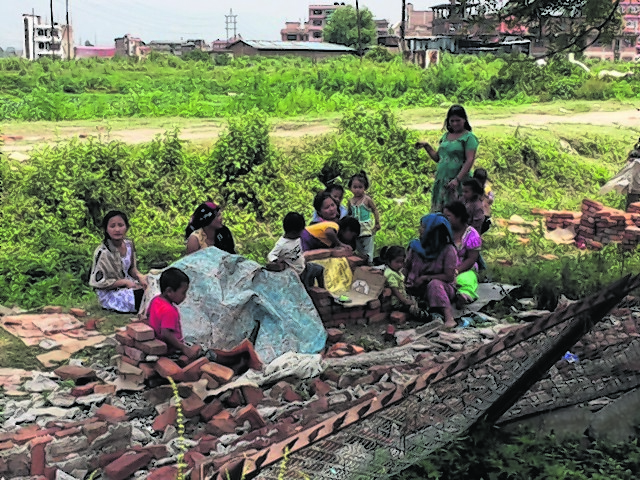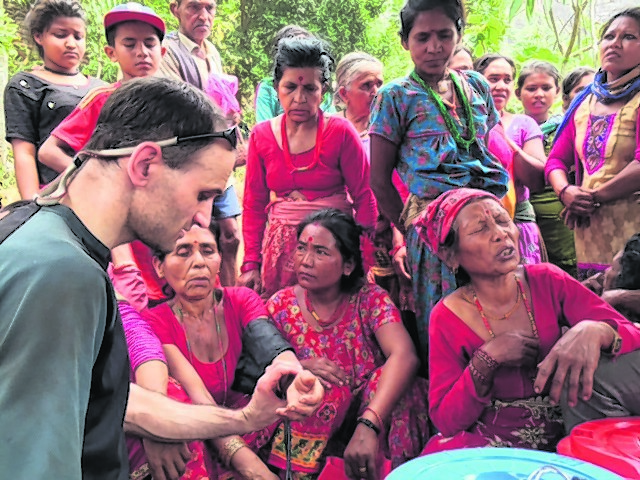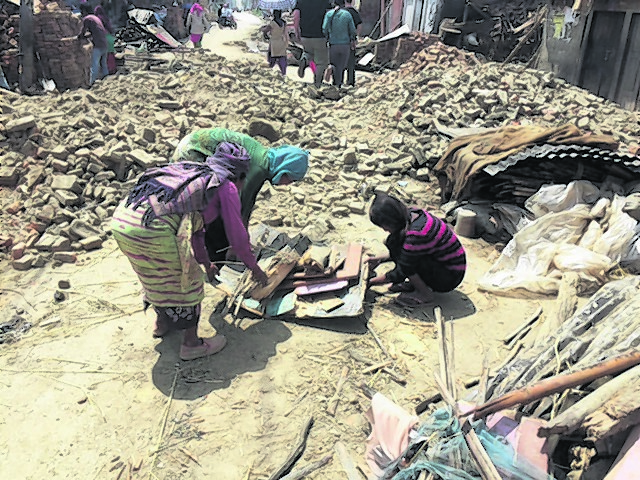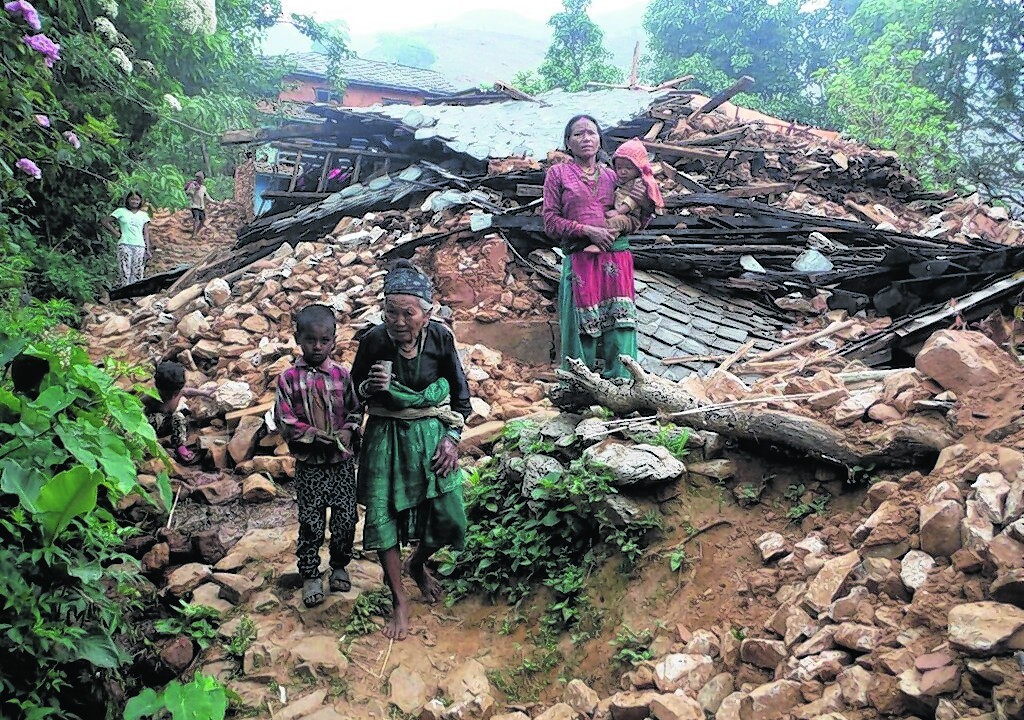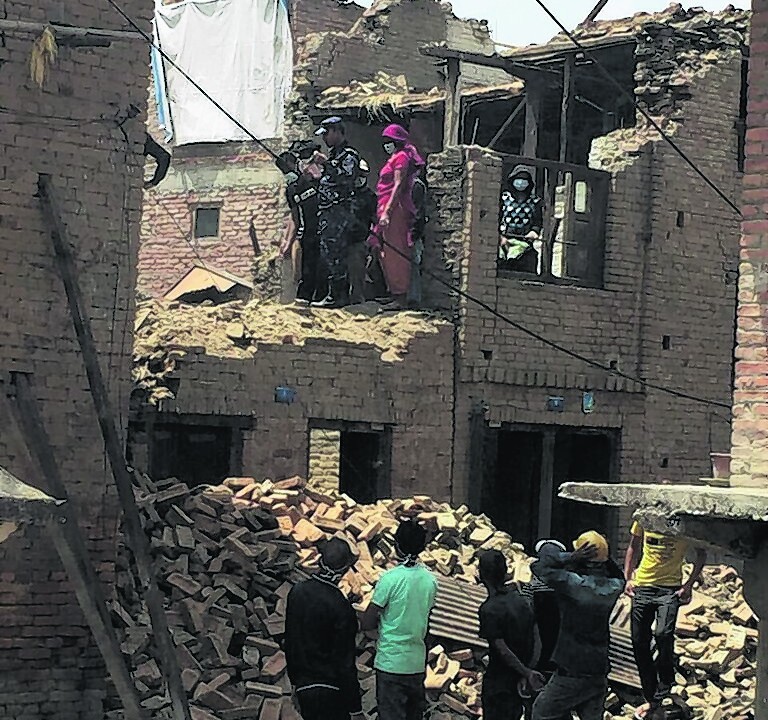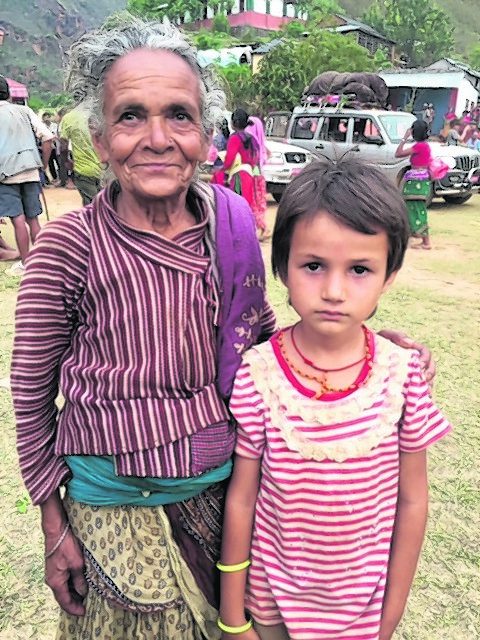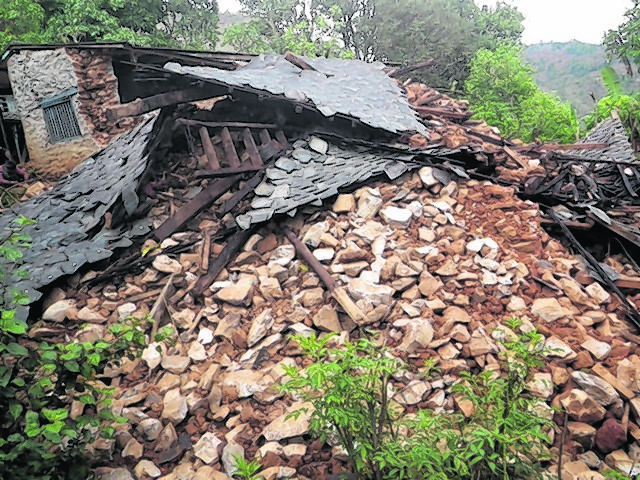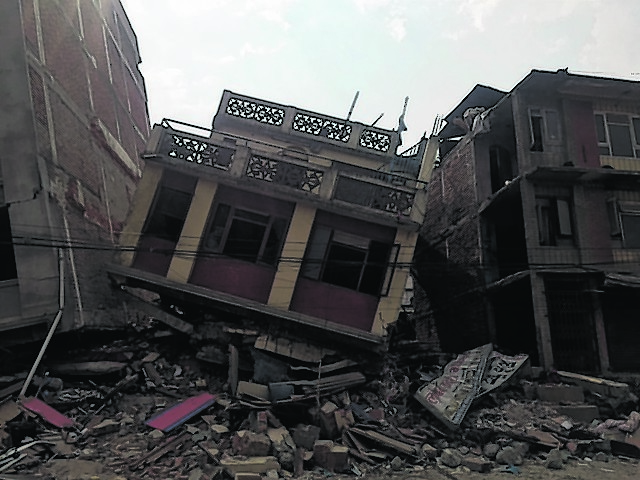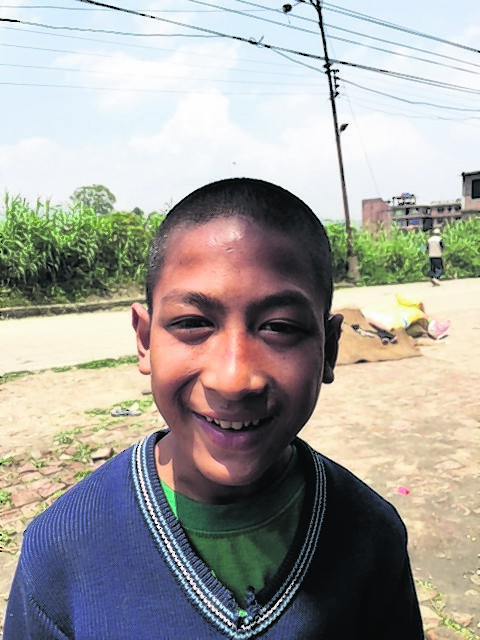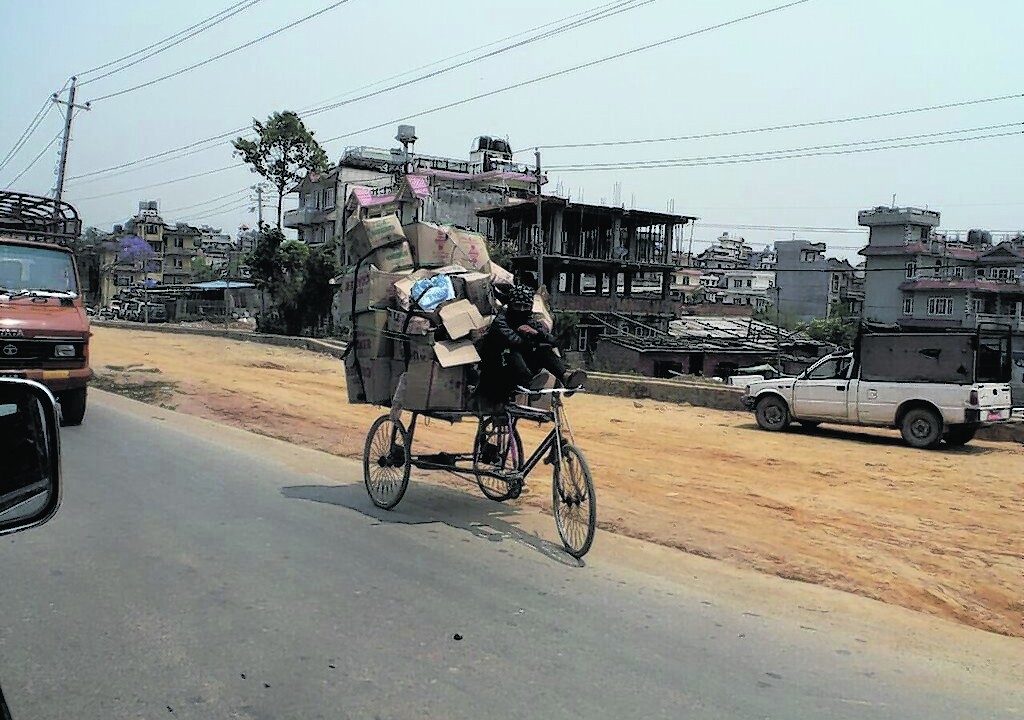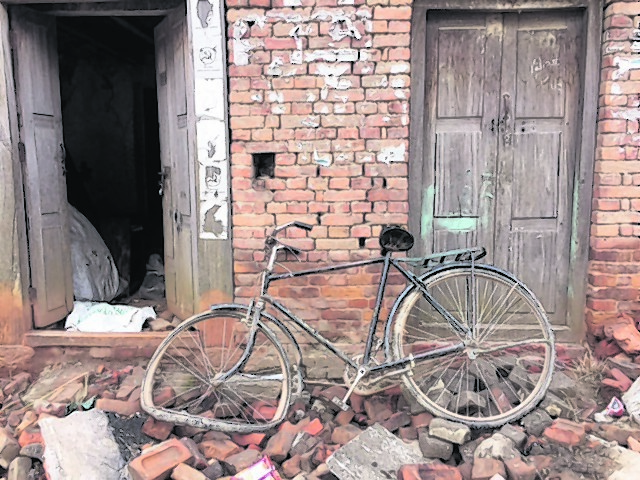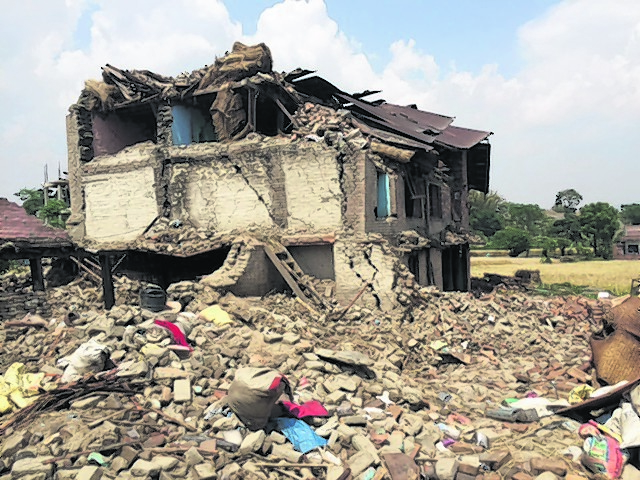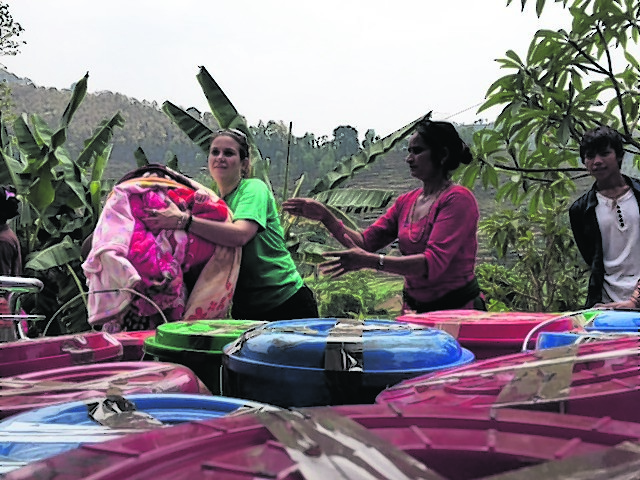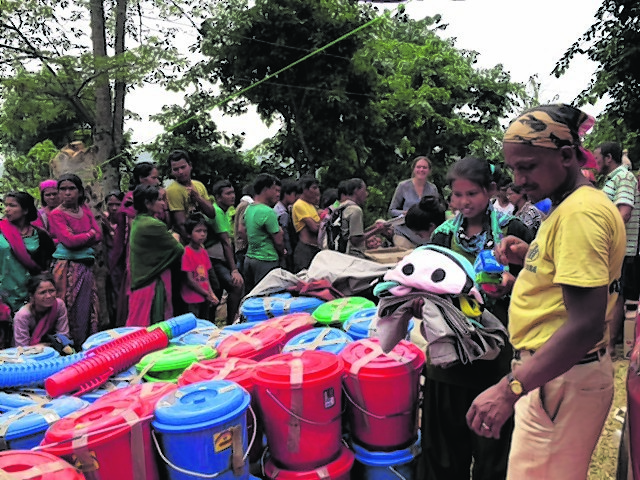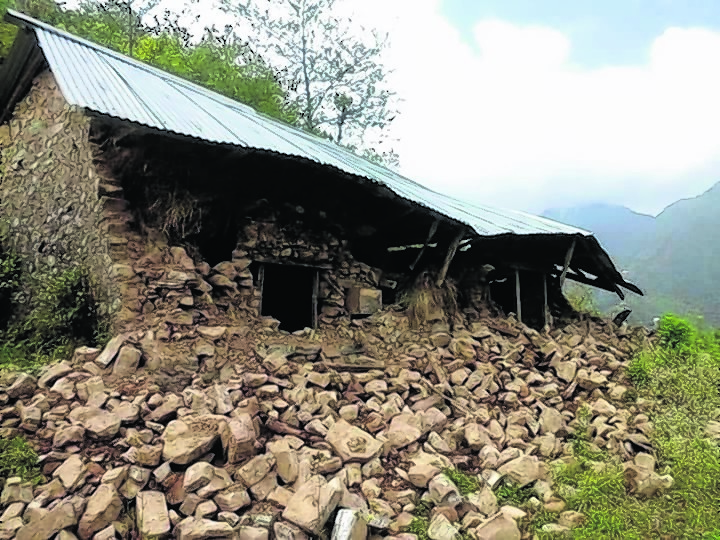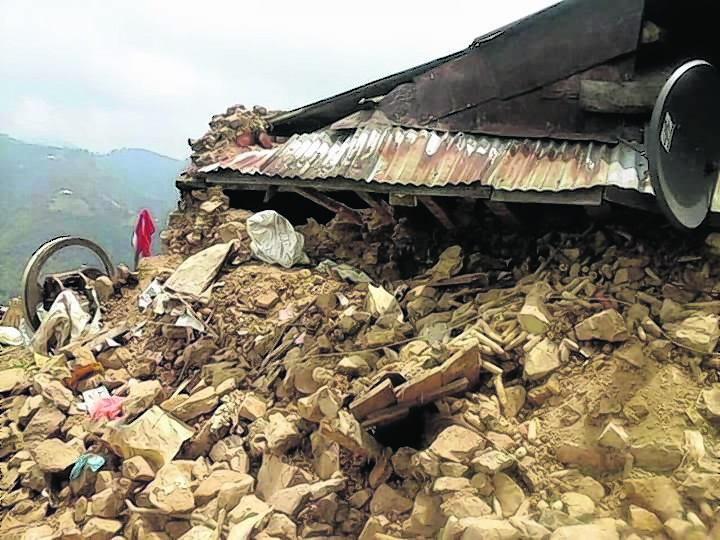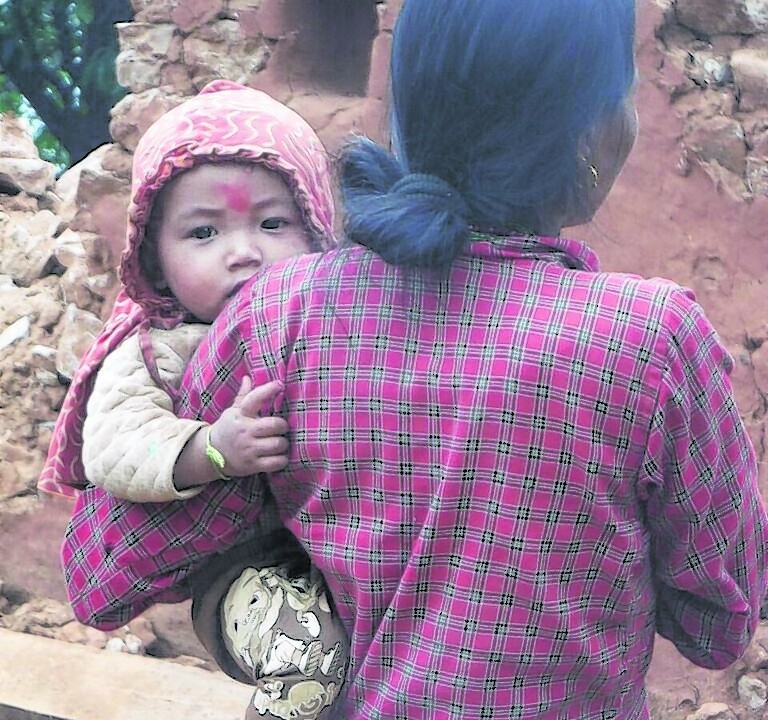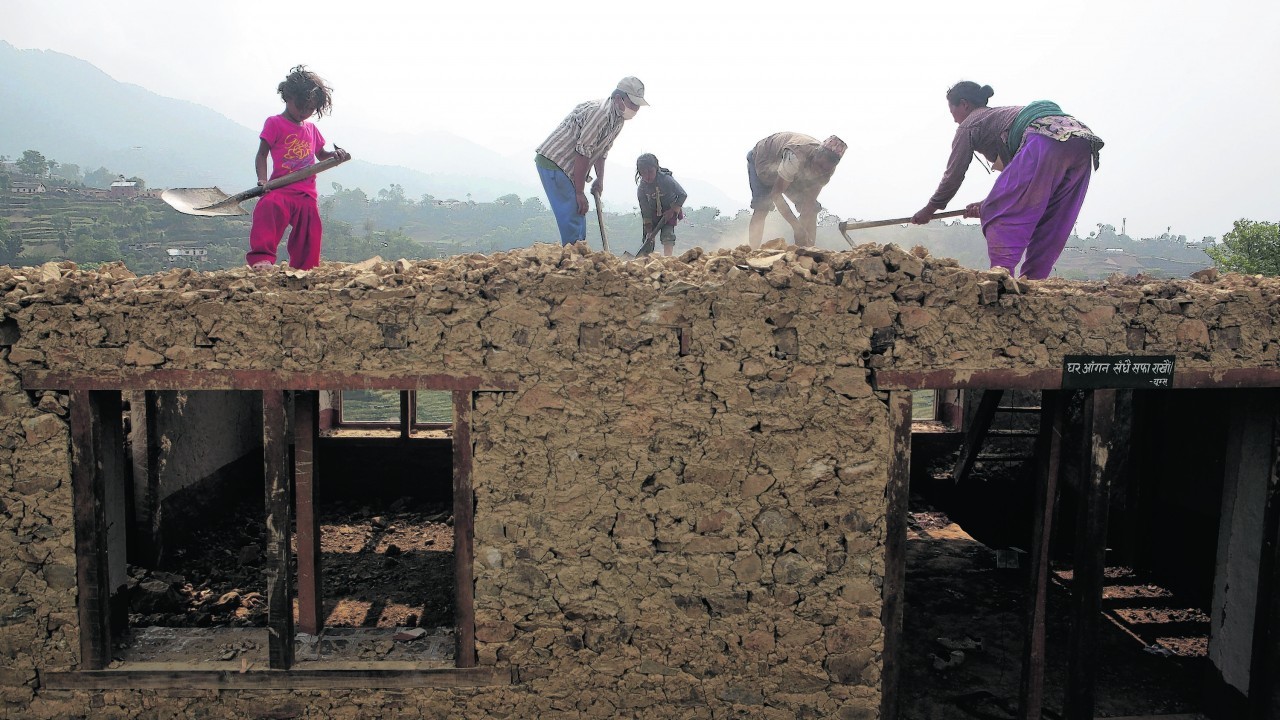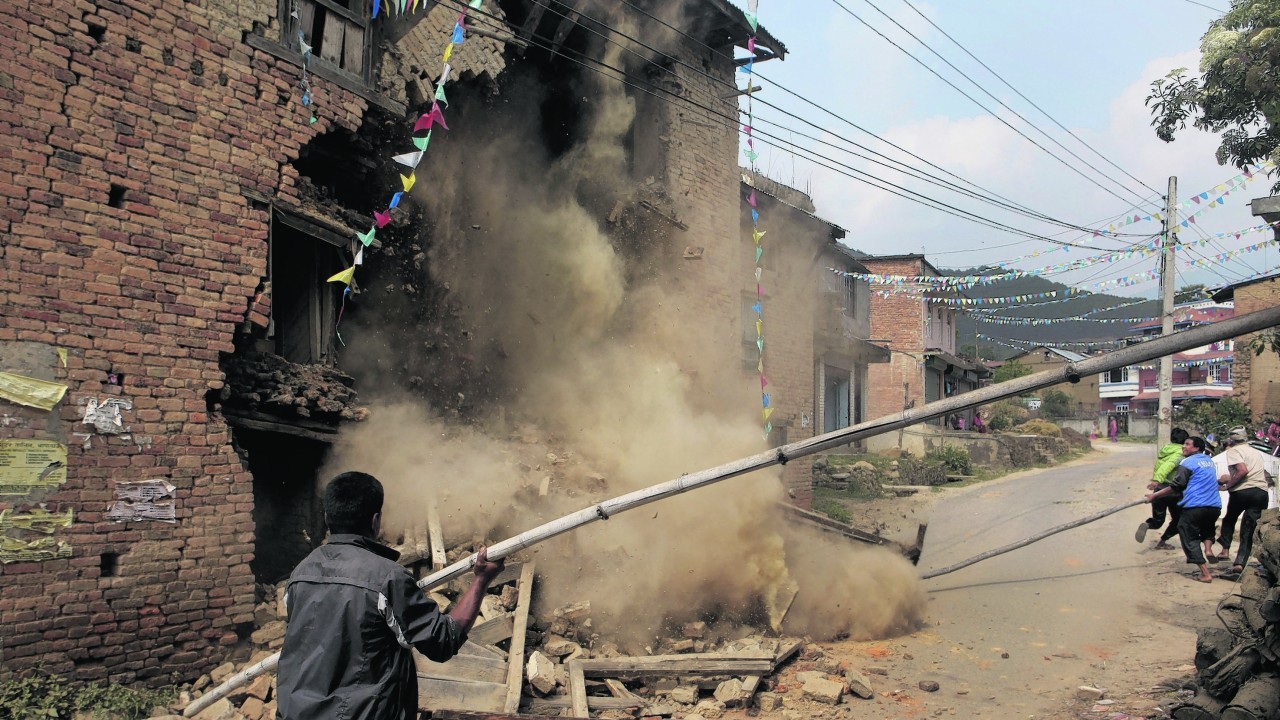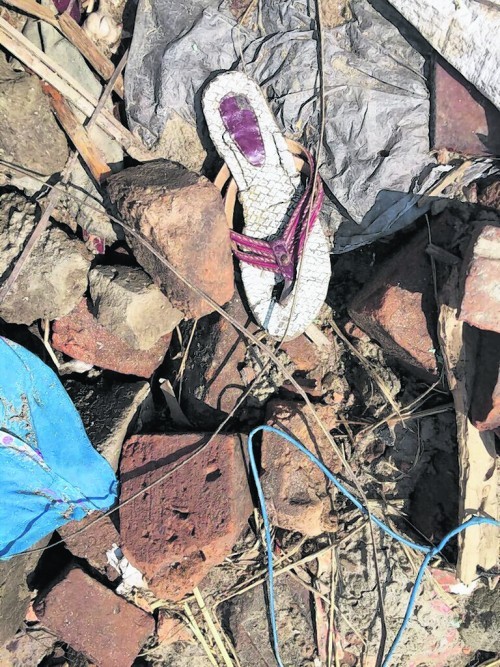In the midst of the Kathmandu earthquake, three brothers-in-law – including north-east mariner Dean Southall – set off on a UK rescue mission to help traumatised workers in a Nepalese clothing factory. Dean tells their harrowing story
We were a rag-tag little rescue team determined to do our bit, but we were overwhelmed as we walked into the middle of a disaster zone.
Waves of emotion hit us: it was heartbreaking, devastating and yet uplifting in a way: the real Gurkha fighting spirit was kicking in as the Nepalese people rallied together.
It was so sad to see mothers and children breaking their backs to dig through a pile of rubble, which was all that was left of their homes. They were trying to find anything that would be of some use in the process of rebuilding their lives.
It was awful: we could smell the dead bodies still buried beneath collapsed buildings.
We met a woman who had lost her entire family and was staying with friends.
You hear the words “human tragedy” across the world’s news media following the disaster, now we were face to face with the reality.
Our group arrived five days after the earthquake which struck on April 25, devastating Kathmandu.
We had gone in search of workers at a clothing factory in Bhaktapur, near Kathmandu, with which one of our group – ethical fashion entrepreneur Kurt Fritzsch – had enjoyed a special business relationship for many years, and with whom he and my sister-in-law had a close bond.
Their range of hats, and other fashion accessories, are stocked in shops the world over. You might have one of their items among your ski gear. Now, the traumatised workforce were desperate and in a state of shock. Kurt’s family felt they had to do something to help in a direct and practical way. The livelihoods of 500 workers had depended on the business.
So, our mission began: Kurt, 46, was joined by myself, a professional mariner working for Bibby Ship Management in Aberdeen – I was brought up in Inverurie, and now live in Fordyce with my wife Claire. Her brother Phil Matthews, 41, came too. As a paramedic in London, he was keen to offer his help and considerable medical skills. Our journey would take us on a rescue convoy beyond the capital of Nepal.
Aircraft weight restrictions meant we had spent half a day before leaving with a set of scales, trying to prioritise which urgent supplies to stuff into our baggage and about our person. We had to pack in medical supplies, water-treatment materials and re-hydration tablets, as well as funds and personal supplies.
We flew from Heathrow to Delhi for a connection to Kathmandu. We were allowed to land immediately as large planes had been banned due to the runway being damaged. It was a very lumpy landing; we thought we had burst a tyre.
DEVASTATION
On arrival, the situation on the ground became very clear, very quickly. Devastation. Many buildings were completely collapsed and many more, although apparently undamaged, on closer inspection were clearly structurally unsound. Over the next few days, several aftershocks were felt, and more buildings came down. In some densely populated areas of Kathmandu, even where buildings remain apparently intact, many people are not willing to go back inside and are instead living in tented accommodation. Many more people are living in damaged buildings and everyone is in a state of shock.
It was amazing to see, so early after the earthquake and in terrible conditions, people drawing food and clothes from the rubble and separating out piles of reclaimed brick, slate, timber and other useful materials in preparation for rebuilding. These people, who most certainly have lost family, friends and all their earthly possessions, are toiling with bare hands to reconstruct their lives, while trying to live, eat, and work with proud dignity. And most surprisingly, to the great credit of these dispossessed people, there seemed to be an air of “business as usual” about Kathmandu.
Major charities were very quick in organising fundraising and funnelling much-needed physical resources to the country, and the Army, NGOs (non-governmental organisations) and many other organisations were mounting a supreme, if apparently somewhat uncoordinated, effort in the country.
The Nepalis are quite obviously a resilient and proud nation of people, and are coping extraordinarily well with the problems facing them. The resourcefulness of these people working together in many different groups is astonishing.
With the limited support and structure they have, these groups are putting up a massive contribution at community level to the targeted provision of relief, medical care, shelter, sanitation, continuation of employment, counselling and in all kinds of other areas of need.
Recovery and rebuilding will be a difficult and complex process, and will certainly be hampered by the imminent monsoon and the further devastating problems to come. Monsoons will surely exacerbate the inherent instability of buildings; landslips will occur, further damaging roads and communications; already ruptured sewage and drainage systems may collapse; water supplies may be contaminated; disease may spread, and life will get tougher for the many who are now living outside.
At the factory, which employs over 500 people between factory and home workers, our group discussed ways of trying to help the staff, and, with the assistance of a structural engineer in the UK, made a full assessment of the buildings.
The factory owners are coping well with the situation and are doing all that they can to help the workers, but there is lots of debate and discussion about how best to apply limited resources in a useful, fair and sustainable way. Immediate relief of food, water, medical checks and short term shelter has been distributed.
The normal factory workforce is 250 people, and only 100 are still coming to work. Of these, some are living in tents or in the houses of relatives, and some are living in their homes, but are concerned about the safety of the buildings.
To add to the difficulties, many of the factory employees are piece workers who knit at home, enabling them to care for their families, and in many cases their crops and animals. These people are spread far and wide, and some have returned to remote regions to help their relatives. It is not yet clear how many of the workers were lost, who is homeless, and what their individual needs are.
In Nepal, our group met with Alison Marston, who has taken time out from her busy life in London working as head of grants and philanthropy for the London-based charity organisation The Bulldog Trust Bulldog Trust. Born in Nepal, Alison has an intimate lifelong knowledge and affiliation with the country and its people, and is well placed to facilitate in providing disaster relief, allocating grant funding from charity donations and advising competent local initiatives.
She has a wealth of expertise in empowering and developing existing local initiative groups in various fields. Her key objective in Nepal now is to help fund and develop these many groups into sustainable, networked, self-supporting structures, which are fully able to meet the various challenges of a long and painful recovery.
Thanks to Alison, we were privileged to participate in an almost impossible overland journey to the farming communities in Dhading District, a region outlying Kathmandu. This effort, facilitated by BVS-Nepal, a local primary relief organisation founded by Alison’s mother and supported by the Bulldog Trust, involved the use of eight four-wheel-drive trucks to carry food, blankets, mosquito nets, tarpaulins and other basic necessities, and included a medical and veterinary team.
The trucks toiled for six hours over poor roads and dirt tracks in mountainous terrain, and only four completed the journey on the same day thanks to some road repairing and pushing from very helpful locals. After a night camped out in the open, the remaining four trucks arrived and the distribution effort began.
Roughly 500 people congregated at the trucks with a sense of order and civility, many dressed beautifully, despite prevailing circumstances, and almost all with smiles and good humour. These proud, battered, but not defeated people brought with them the air of a sunny holiday, and showed immense good grace.
Thanks to some very good preparation by the local schoolmaster, Lila (see letter below), who has a major social role as leader of the communities, the needs of each of 200 families (approximately 800 people) were identified and resources distributed efficiently and personally.
The medical team (Phil and translator Pramada Shah, co-founder/president of BVS-Nepal) saw some 50 patients, suffering mostly from the effects of post-traumatic stress including the effects of dehydration and malnourishment, lack of basic wound care, and failure to recognise major ailments. It was quite clear in Kathmandu that everyone is suffering from high levels of stress, and are terrified of a repeat event. Many people living, sleeping or working inside buildings are afraid.
The veterinarian surgeons saw to several livestock trauma cases, and carried out vaccinations as part of a wider programme. Loss of livestock is a major issue to these rural people, and many animals were lost during the earthquake due to the collapse of outbuildings and land subsidence.
It was estimated that the entire effort of providing all of this assistance, including food to last a week for some 800 people, cost only £5,000. This is an example of what can and is being achieved at a grassroots level, with voluntary teams and donations channelled through a local organisation, which in turn is being supported effectively by well-managed grant funding.
The group returned to Kathmandu filthy and tired, but exuberant and optimistic.
Phil, after a much-needed night on a couch, donned damp clothes from a stand-up wash the night before, and went off with Laeticia to help dress some severe burn wounds. Laeticia is a Belgian national who has worked in Nepal for over five years supporting BVS-Nepal. Together, they cleaned and dressed several patients, one of whom, a 22-year-old woman who suffered 40% burns to the back and torso – not inflicted through the earthquake, but through domestic violence.
Back at the factory, a voluntary health clinic was organised for the workers to carry out some basic health checks and provide some post-earthquake health advice.
We were doing the best we could in these dire circumstances, but the real heroes here are the people, who are so resilient and welcoming. The world has mobilised and provided much needed help, but the long-term situation is painful and the aid is drying up here already.
On our last night, the factory presented each of us with a Tibetan prayer wheel, mine engraved: “To Dean Southall. Token of appreciation for helping the earthquake victims of April 25th, 2015, Bhaktapur, Nepal. From Pradhanang Apparels Industry Family”.
This is the best thing I have ever received in my life. I told them if ever there was an earthquake in Scotland, I would run to the wall and carry this out as my most precious possession. I don’t think I will ever stop trying to help these wonderful people.
We said farewell to our friends and travelled back to Delhi. As we waited at the airport, we could feel the tremors from the second major earthquake which hit on Tuesday, and wished we had stayed to help.
ACTION NEEDS TO BE TAKEN QUICKLY
On April 25, the 7.8 magnitude earthquake struck central Nepal, impacting 39 of the 75 districts across the country, including the capital, Kathmandu, killing more than 8,000 people. Casualty figures are expected to rise as rescue efforts continue (hundreds of Nepali nationals and foreigners are still missing).
Mount Everest was also struck by deadly avalanches, with many casualties of climbers. The number of Sherpa and porter fatalities is still not clear.
Normally, the monsoon season arrives around mid-June, when the country experiences daily, heavy rainfall. The horrors of disease, epidemics and hundreds of thousands of homeless people living in poor and unsanitary conditions during the monsoon could be catastrophic.
Nepal is one of the world’s poorest countries, and is still struggling to overcome the effects of the civil war from 1996 to 2006.
The Nepal Earthquake Recovery Appeal 2015 fund will direct donations towards small, grassroots non-governmental organisations working on the ground to support Nepal’s recovery. Donations are being collected via UK charity The Bulldog Trust.
The most important need is to ensure the population have access to food/water, medical attention, hygiene and sanitation and shelter. Vulnerable communities, women and children and those with disabilities or health problems, such as burns survivors and those who are affected by leprosy, will be prioritised as beneficiaries for support.
HOW YOU CAN HELP
Donations please to: brandaid
The Bulldog Trust: www.bulldogtrust.org
BVS-Nepal: www.bvs-nepal.org.np
World Vets: worldvets.org
Kusan Accessories: www.kusan.co.uk
PLEASE WATCH THE VIDEOS:
https://www.youtube.com/channel/UCJKiBhSAGgyr_vaomc6QXGQ
MORE PHOTOS AT:
https://www.dropbox.com/l/7GSXyXh9pjtNhGjEneaPGu
LETTER TO THE BROTHERS FROM LOCAL SCHOOLMASTER LILA
“I bow to the God within you”
Respected sir
Namaste
I hope you well.
This is me LILA BISHWAKARMA, a teacher of that area where you been.
It was a great help from your participation to my villagers in the program by BVS Nepal’s on 8th May in Mulabari village.
Thus, from my side and on behalf of my villagers, I would like to thanks to you and your brother-in-law. Convey my Namaste to him.
I hope, more help from you to my village as soon as possible.
I want to be keep in touch and will be waiting your kind response.
There are lots of photos though I have attached to share within you networks.
Please! Help us to bring our lives in normal condition as much as possible.
School and community reconstruction is essentially needs after bringing daily in normal situation.
Sincerely Yours
Lila
